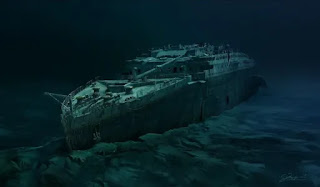Human remains are noticeably missing from the Titanic wreck, even though over 1,500 lives were lost in the tragedy.
The Titanic, often called the “unsinkable” ship, sank more than 100 years ago in the icy Atlantic, taking 1,517 people with it. While movies like Titanic have shown us emotional moments from that day, there are still many unanswered questions about what happened after the ship went down.
One puzzling detail stands out for those who have visited the wreck: no human skeletons have been found near the Titanic’s remains.
The wreck is filled with personal belongings, furniture, and even shoes. But despite the harsh conditions and the tragic loss of life, the ocean floor has revealed no human bones. Many victims either floated on the surface or were trapped inside the ship. Given the freezing water, it seems surprising that bones wouldn’t have been preserved.
Experts say the answer lies in the unique conditions of the deep ocean.
The Titanic rests 3,800 meters below the surface, where bacteria break down organic material, including bones. But another key factor is the chemical makeup of the water at those depths.
Robert Ballard, the explorer who discovered the Titanic wreck in 1985, explained why bones dissolve under these conditions. “The water in the deep sea is under-saturated in calcium carbonate, which is what bones are made of,” he said. Once bacteria consume the flesh, the exposed bones dissolve completely.
By contrast, in areas like the Black Sea, where such bacteria aren’t present, bones remain intact for much longer.
While human remains are gone, shoes are often found at the wreck site. Leather shoes, treated to resist decay, have survived the ocean’s tough environment. These shoes are a sad reminder of the people who were aboard the Titanic when it sank.
For many, this revelation is unsettling. Discussions online reflect surprise, with people commenting on how the deep ocean affects human remains.
Though skeletons are no longer present, these items offer a glimpse into the lives lost that day in 1912.




Post a Comment